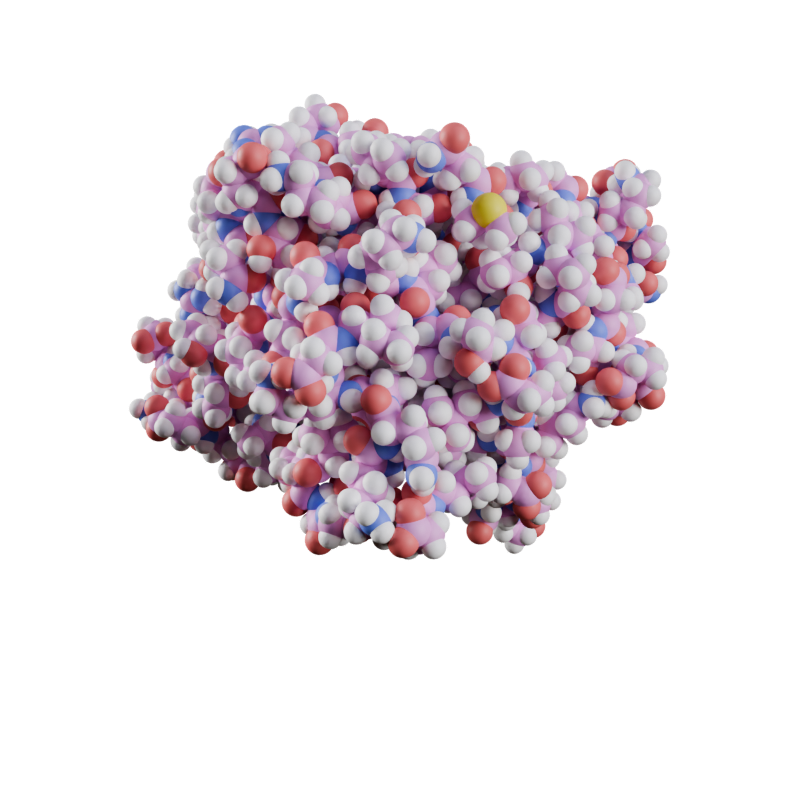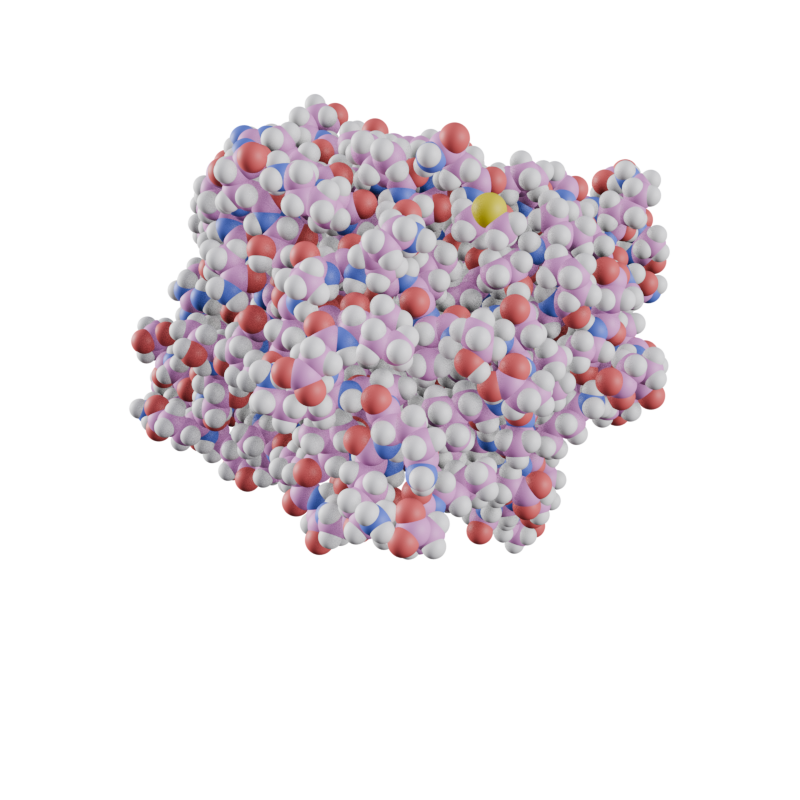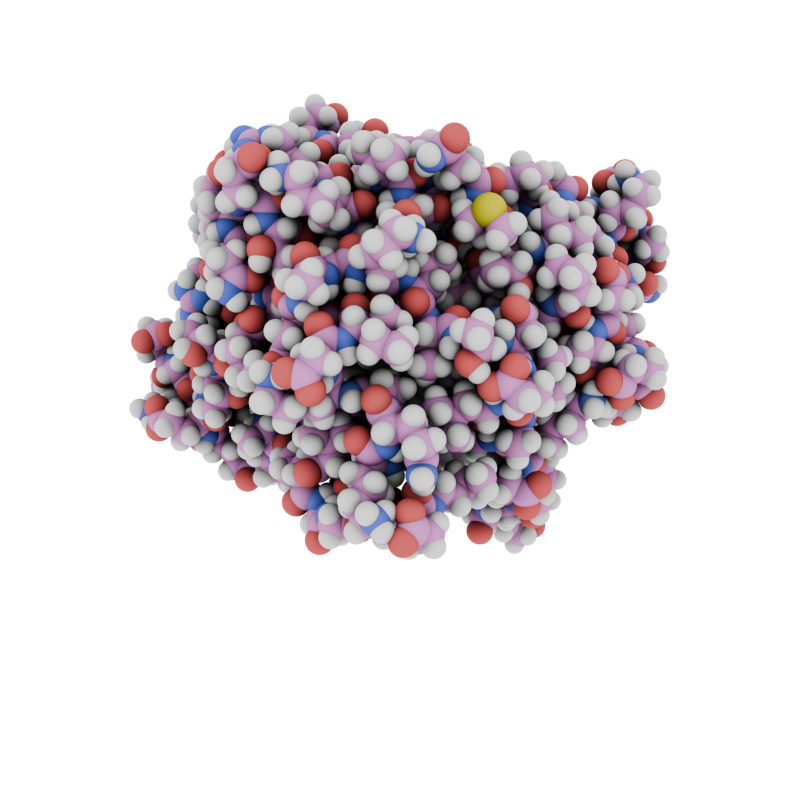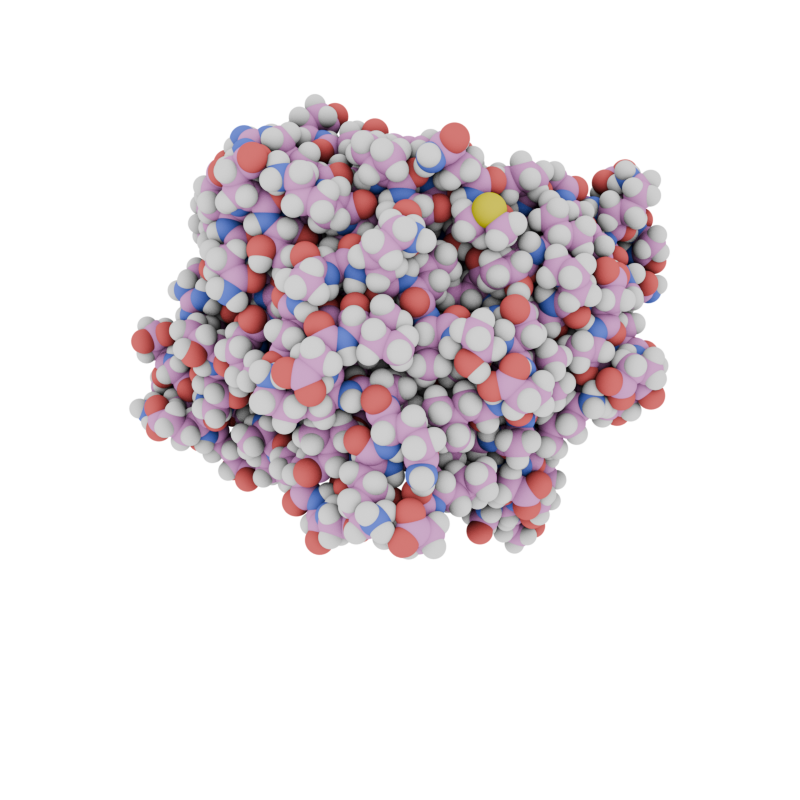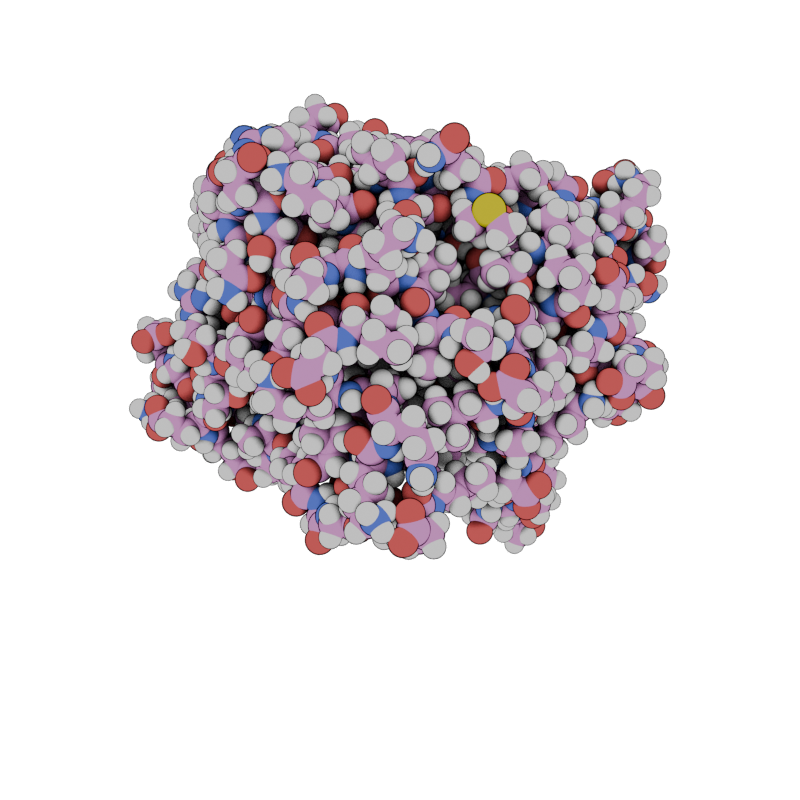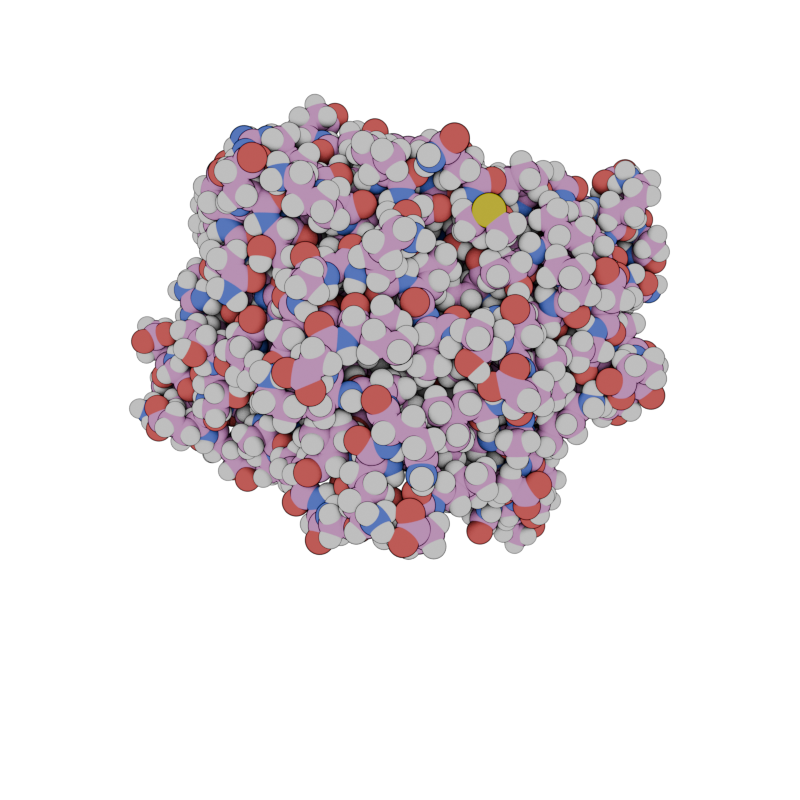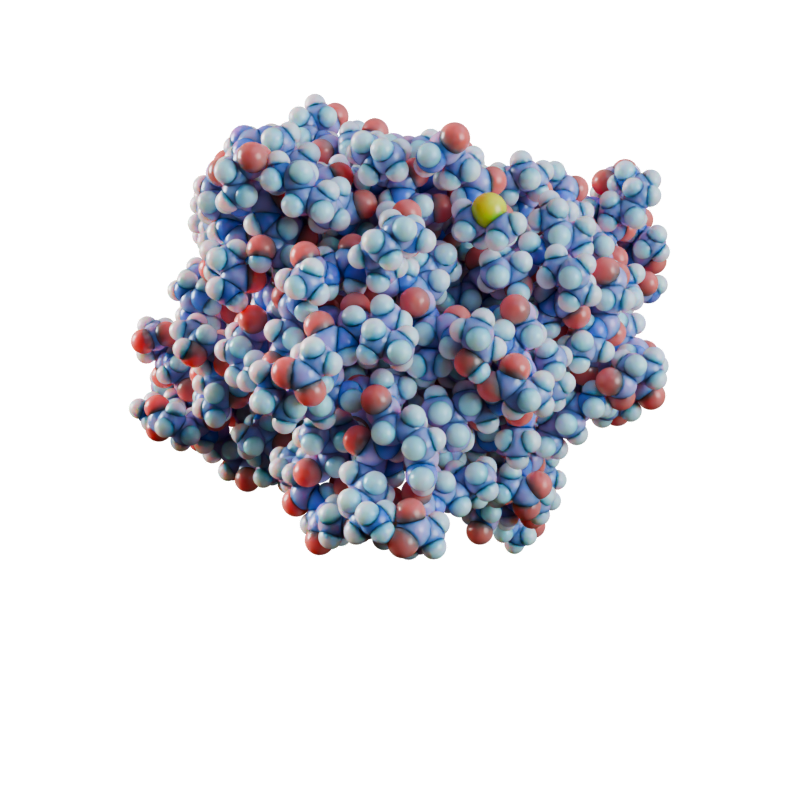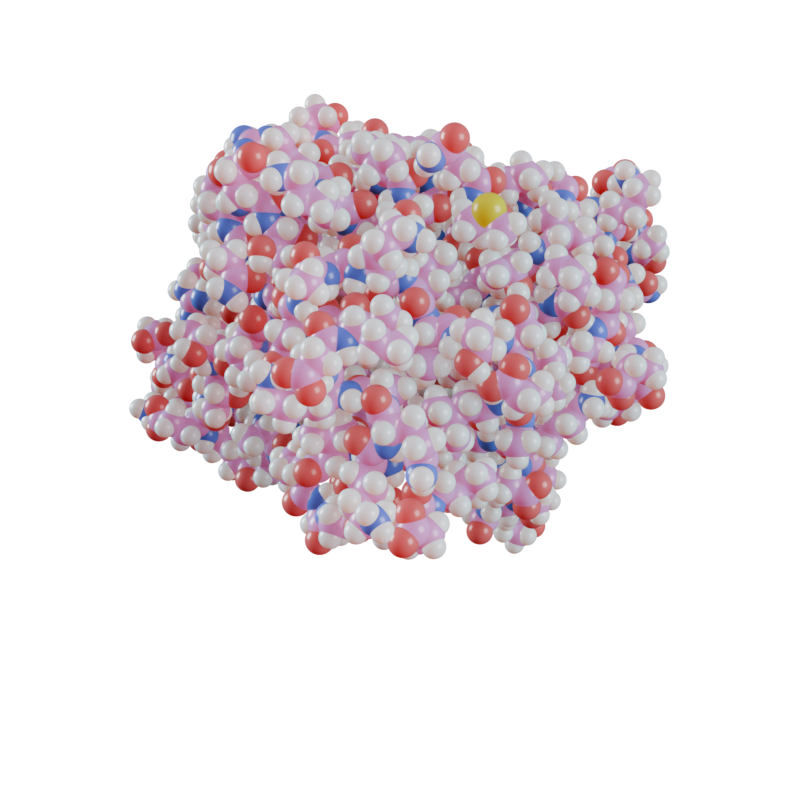import molecularnodes as mn
cv = mn.Canvas(engine="EEVEE", resolution=(800, 800), transparent=True)Materials
We can progrommatically access the properties of the materials like this:
mol = mn.Molecule.fetch("8H1B").add_style(
mn.StyleSurface(), material=mn.material.AmbientOcclusion()
)
cv.frame_object(mol)
cv.snapshot()
mol.styles[0].material.ambient_occlusion_distance = 0.1
cv.snapshot()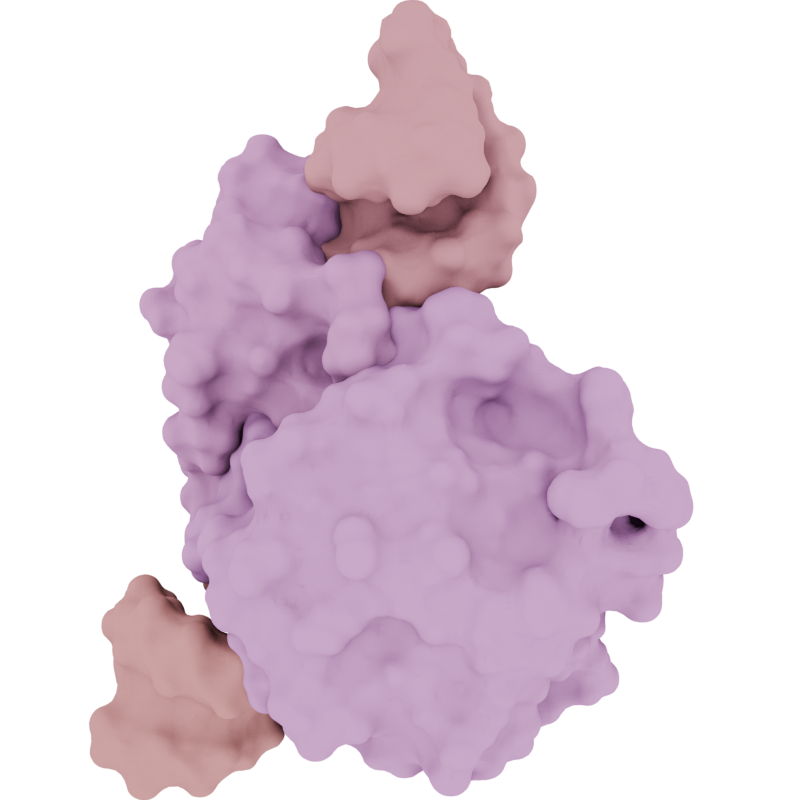
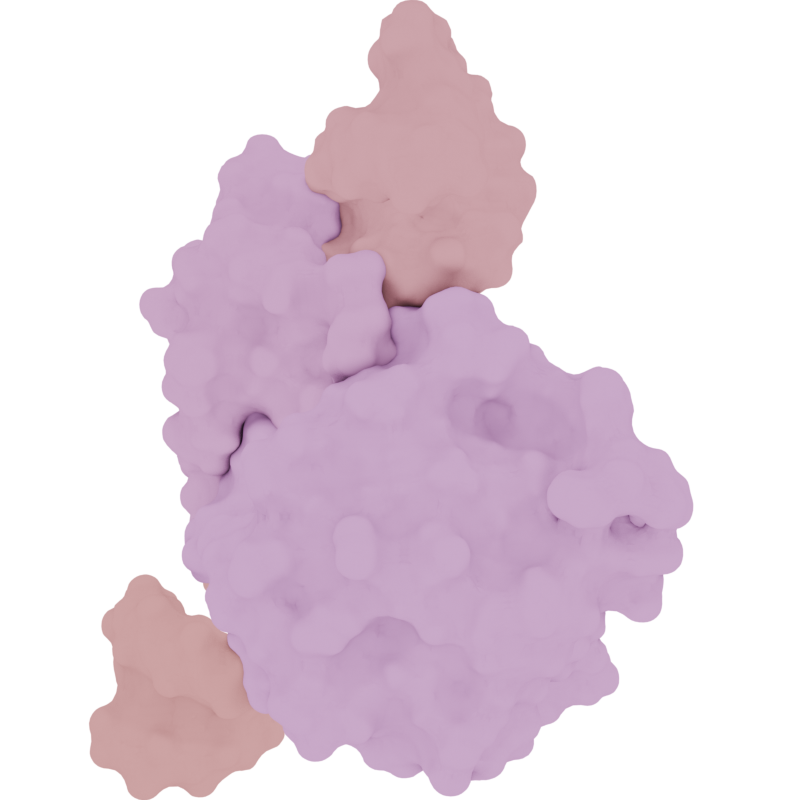
mol.styles[0].material = mn.material.FlatOutline()
cv.snapshot()
mol.styles[0].material.math_value = 0.1
cv.snapshot()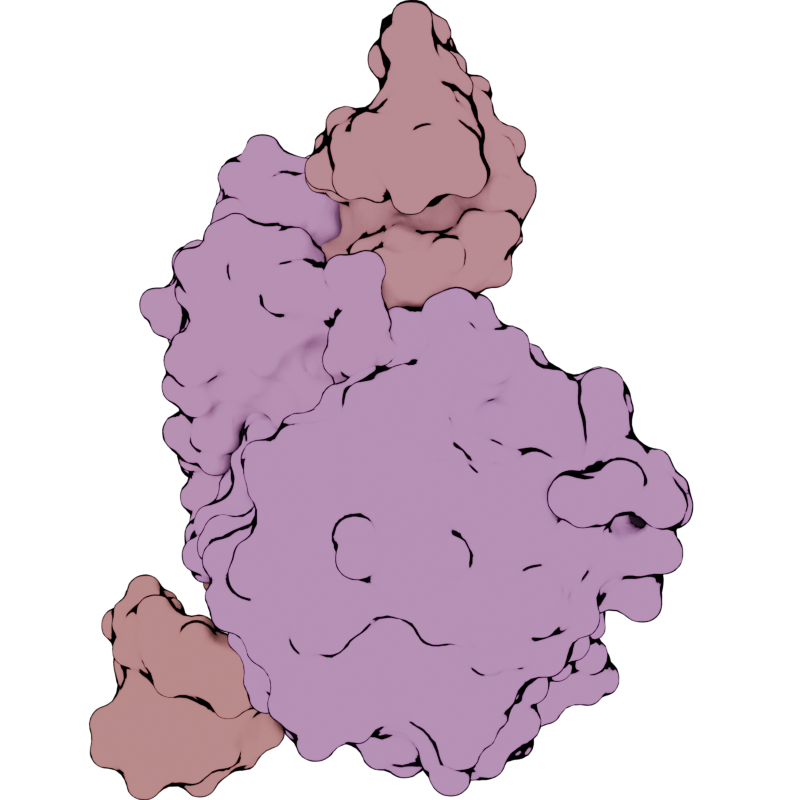
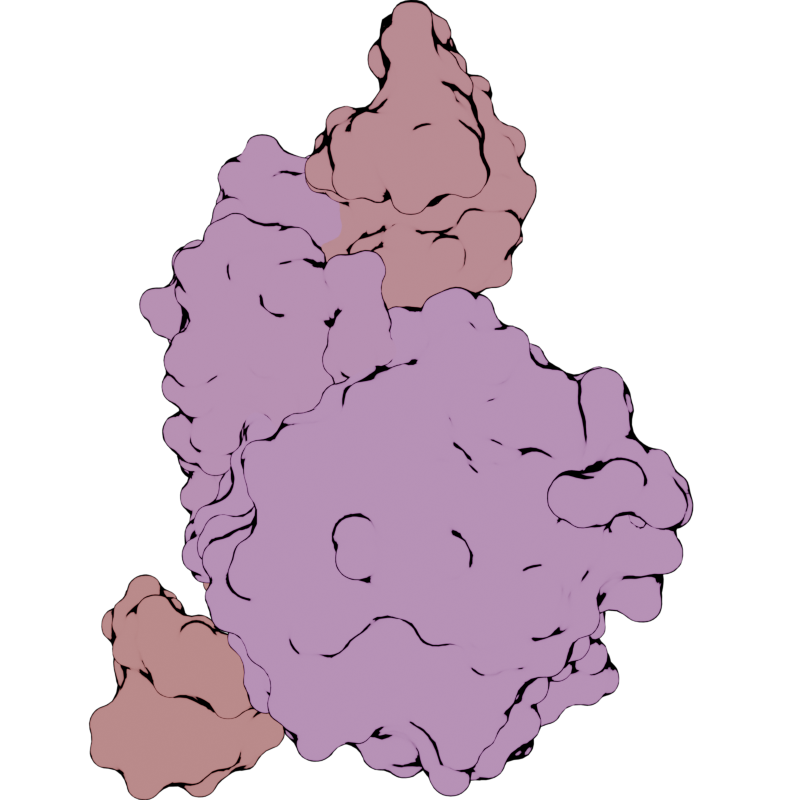
Propeties for the material interface are based on the inputs of the nodes in the material.
[x for x in dir(mn.material.AmbientOcclusion()) if not x.startswith("_")]['ambient_occlusion_color',
'ambient_occlusion_distance',
'ambient_occlusion_normal',
'emission_color',
'emission_strength',
'material',
'math_value',
'mix_a',
'mix_b',
'mix_factor',
'tree']Render Engines and Materials
The different render engines handle materials diferently.
import MDAnalysis as mda
import itertools
from MDAnalysis.tests.datafiles import PSF, DCD
cv = mn.Canvas(resolution=(800, 800), transparent=True)u = mda.Universe(PSF, DCD)
traj = mn.Trajectory(u)
traj.add_style(mn.StyleSpheres(geometry="Mesh", subdivisions=4))
cv.frame_view(traj)
engines = [mn.scene.Cycles(samples=32), mn.scene.EEVEE()]
materials = [
mn.material.Default(),
mn.material.AmbientOcclusion(),
mn.material.FlatOutline(),
mn.material.Squishy(),
]
for mat, eng in itertools.product(materials, engines):
cv.engine = eng
traj.styles[0].material = mat
cv.snapshot()